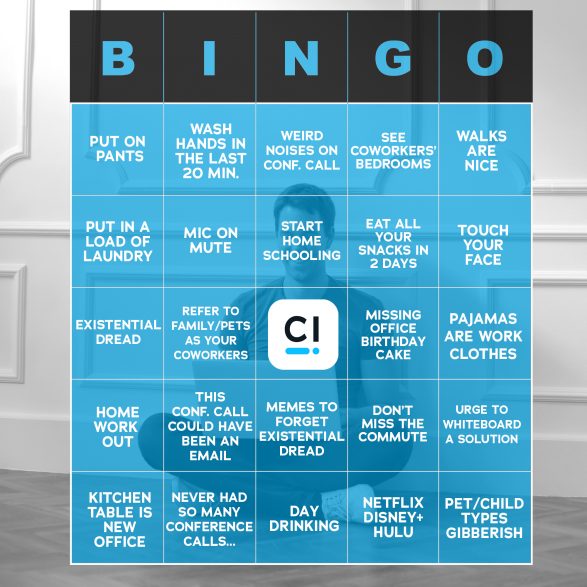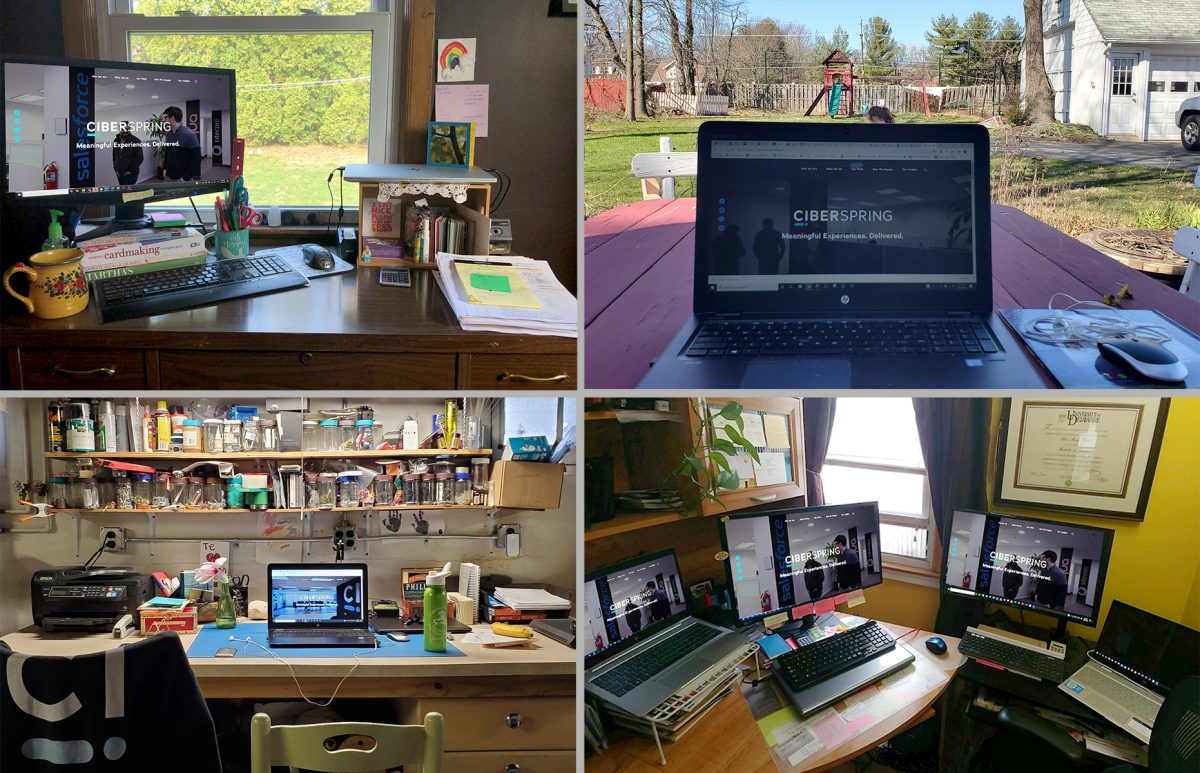As shelter-in-place orders proliferate and non-essential businesses are ordered to close, more and more companies are working remotely out of necessity. Working from home used to be a great perk, it’s now a lifesaving necessity for managing the pandemic.
While many employees have long asked for remote working options, being thrust into an all remote, all the time schedule is a big shift. It can be quite challenging to juggle everything, especially if your team hasn’t collaborated remotely before.
We’ve been pioneering remote working since our founding in 2003. Our employees are spread across the US and the globe. Here is some hard-won knowledge from our years of operating as a remote team.
Your office away from the office
If you have the extra space, in your home, dedicate an area as your workspace. Having your own workstation helps mentally prepare you for work mode. The ideal is a home office with a door, but it can be a corner of the living room or laptop on the kitchen counter. Wherever it is, it shouldn’t be a place you go to relax like your bed or couch. Make sure the other members of your household know it is designated for work.
Have a separate work space where there are no distractions. I work out of a finished basement and no one enters when I’m on the phone. Set up your workspace so that you have fun and inspiring things around you.
Liz Samaris, director of project management
If it’s an option, have things you enjoy in your space. I’m a collector of stuff and for whatever reason, it helps to have little things around my desk that bring me joy—my child’s artwork, funny sayings, books, and so on.
Heather Korzin, HR manager

Schedules and routines
Working from home presents all kinds of work/life balance challenges. Work bleeds into your personal life and vice versa until it’s all a blur. As Shirley Shea, Pega practice lead notes, “Working at home means you’re ‘at work’ 24 hours a day, which makes it easy to work throughout the waking hours and work much more than one should work.”
The antidote is to make a schedule and cultivate routines for you and your household.
Treat working at home like you are going to the office. Have a routine by getting up the same time each day, take a shower, and get dressed for the day.
Liz Samaris, director of project management
Have a schedule, but it doesn’t need to be a standard 9 – 5. For example, if you have kids that need your attention you can pause and tend to their needs. My kids nap in the afternoon, so it is easy for me to shift my schedule around in the morning and work during their naps. After they go to bed at night, I can finish whatever work I couldn’t get to during the day.
Brenda Landau, director of finance & administration
Productivity hacks
While there are lots of distractions in the office, it’s a myth that there aren’t any at home. Whether it’s housemates making noise, laundry and house cleaning, or the ever-present temptation of Netflix, there’s always something to do at home besides work.
For me, it’s important to “tune out” the rest of my household while I’m on calls, so I got myself a set of noise-cancelling headphones with a mic. I may look as if I’m taking drive-through orders at a fast-food place, but I’m able to focus and stay in a “work state of mind” as needed. Another thing I do is make myself a daily to-do list. I like to start on it the night before so I can hit the ground running in the morning.
Alice Matthews, Eloqua practice developer manager
My go-to practice for staying focused is the Pomodoro Technique, which calls for 25 minutes of focused work, followed by a five-minute break. Take a longer break after a few successful Pomodoros in a row and then rinse and repeat.
Dan Landau, marketing & communication manager

Some of the home offices Ciberspringers are serving clients from during the pandemic.
Working at home with family
We love our families, but sometimes, staying in the house with them 24/7 can be challenging. And there’s no question, managing a job and entertaining or homeschooling children is tough.
Have a schedule and stick to it—especially if you have a young kid at home, kids rely on schedules, but schedules are good for keeping anyone accountable. If your child knows that an hour here and an hour there during the day are carved specifically out for them, then they’re less likely to come bug you when you’re working. Once the new routine is established, they know they’ll have your undivided attention at a certain time (not true for all kids, but it mostly works for mine!).
As for working from home with your significant other, everyone needs time to recharge. Go to different rooms and each do your own thing for a while. When you come back together, you’ll have more patience and be more refreshed. Absence makes the heart grow fonder, even if it’s only a distance of 15 feet.
Heather Korzin, HR manager
Staying healthy
When you’re at home all day, it’s easy to forget about taking care of yourself. Especially if you’re trying to juggle the demands of childcare with work at the same time.
I build in some “me” time first thing in the morning and at least a 10-minute break of fresh air when possible mid-day or in the early evening. Without those breaks, 7 a.m. would run into 7 p.m. pretty quickly.
Pat Donlin, sales director
Stretching and doing yoga poses in the morning, before you start your day gives you a fresh start and keeps your mind relaxed.
Joseph Greco, Salesforce operations manager
Stay connected with family and friends; working from home can make you feel very lonely and isolated.
Liz Samaris, director of project management
Stay hydrated and drink lots of water. Working from home is a great opportunity to jump on the treadmill and have your meetings while you walk/run, or do some squats with the “Bring Sally Up” song—you can get a full leg workout in less than four minutes.
Brenda Landau, director of finance & administration



